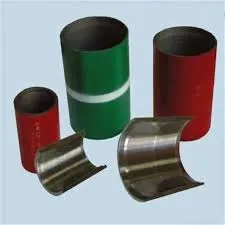- Afrikaans
- Albanian
- Amharic
- Arabic
- Armenian
- Azerbaijani
- Basque
- Belarusian
- Bengali
- Bosnian
- Bulgarian
- Catalan
- Cebuano
- Corsican
- Croatian
- Czech
- Danish
- Dutch
- English
- Esperanto
- Estonian
- Finnish
- French
- Frisian
- Galician
- Georgian
- German
- Greek
- Gujarati
- Haitian Creole
- hausa
- hawaiian
- Hebrew
- Hindi
- Miao
- Hungarian
- Icelandic
- igbo
- Indonesian
- irish
- Italian
- Japanese
- Javanese
- Kannada
- kazakh
- Khmer
- Rwandese
- Korean
- Kurdish
- Kyrgyz
- Lao
- Latin
- Latvian
- Lithuanian
- Luxembourgish
- Macedonian
- Malgashi
- Malay
- Malayalam
- Maltese
- Maori
- Marathi
- Mongolian
- Myanmar
- Nepali
- Norwegian
- Norwegian
- Occitan
- Pashto
- Persian
- Polish
- Portuguese
- Punjabi
- Romanian
- Russian
- Samoan
- Scottish Gaelic
- Serbian
- Sesotho
- Shona
- Sindhi
- Sinhala
- Slovak
- Slovenian
- Somali
- Spanish
- Sundanese
- Swahili
- Swedish
- Tagalog
- Tajik
- Tamil
- Tatar
- Telugu
- Thai
- Turkish
- Turkmen
- Ukrainian
- Urdu
- Uighur
- Uzbek
- Vietnamese
- Welsh
- Bantu
- Yiddish
- Yoruba
- Zulu
female threaded coupling
Understanding Female Threaded Coupling An Essential Component in Mechanical Engineering
In the realm of mechanical engineering and plumbing, the significance of threaded coupling cannot be overstated. Among the various types of threaded couplings, the female threaded coupling stands out as a crucial element in establishing secure and leak-proof connections between pipes or fittings. This article delves into the characteristics, applications, and advantages of female threaded couplings, shedding light on their integral role in various industries.
A female threaded coupling is essentially a fitting with internal threads that allows it to connect to male threaded components. Typically made from materials such as brass, stainless steel, PVC, or galvanized steel, these couplings offer versatility in application, catering to different environmental conditions and requirements. The female threads grip the male threads snugly, ensuring that the joined components can withstand internal pressures and external forces.
One of the primary advantages of female threaded couplings is their ease of installation. The straightforward screw-on mechanism allows for quick and efficient assembly. This feature is particularly valuable in construction and plumbing projects where time is of the essence. Moreover, the robust design of these couplings ensures durability and longevity, which is critical in applications involving high fluid flow rates or pressure changes.
female threaded coupling

Female threaded couplings find application across various sectors. In residential plumbing systems, they are commonly used to connect pipes in water supply lines and drainage systems. Their reliable sealing capabilities make them ideal for preventing leaks, which can lead to significant water waste and structural damage. Additionally, in industrial settings, these couplings are utilized in the assembly of hydraulic and pneumatic systems, where they contribute to the safe and efficient transfer of gases and liquids.
In the oil and gas industry, female threaded couplings are vital components in the construction of pipelines and refineries. They facilitate the secure connection of pipes, ensuring that the transportation of crude oil and natural gas is both safe and efficient. The ability to withstand harsh environmental conditions, including extreme temperatures and corrosive substances, makes female threaded couplings an indispensable choice in these high-stakes applications.
Another notable feature of female threaded couplings is their adaptability. Many designs allow for the integration of different types of fittings, enabling engineers to create customized solutions that meet specific project requirements. This adaptability is not only beneficial for new installations but also for maintenance and upgrading existing systems.
In conclusion, female threaded couplings play a critical role in various mechanical and plumbing systems. Their ease of use, durability, and adaptability make them indispensable in both residential and industrial applications. As industries continue to evolve and demand higher standards for safety and efficiency, the development and optimization of such fittings will remain a priority in engineering design and application. Thus, understanding and utilizing female threaded couplings efficiently can lead to better performance and reliability in numerous engineering projects.
-
Tubing Pup Joints: Essential Components for Oil and Gas OperationsNewsJul.10,2025
-
Pup Joints: Essential Components for Reliable Drilling OperationsNewsJul.10,2025
-
Pipe Couplings: Connecting Your World EfficientlyNewsJul.10,2025
-
Mastering Oilfield Operations with Quality Tubing and CasingNewsJul.10,2025
-
High-Quality Casing Couplings for Every NeedNewsJul.10,2025
-
Boost Your Drilling Efficiency with Premium Crossover Tools & Seating NipplesNewsJul.10,2025







